
How Do Volume and Tone Pots Work For Guitar?
Volume and tone pots play a crucial role in your guitar’s sound and setup. By learning more about these pots, you can ensure you choose the right type and value for your instrument.
Table of contents
THE BASICS OF POTS
A potentiometer, commonly referred to as a “pot,” is a type of variable resistor. By turning the knob on the pot, you change how electricity flows through it. Inside the pot is a circular resistor strip, known as the “element,” which is contacted by a component called a “sweeper.”
When you turn the knob, you adjust the position of the sweeper along the resistor strip. This adjustment allows you to select how far the electricity must travel on the strip before reaching its output.
A potentiometer functions as an “L-Pad,” an electrical device that performs two tasks simultaneously. It introduces series resistance and creates a short circuit across the signal. This short circuit helps dampen high frequencies in the signal, even when the pot is set to its maximum value, or “10.” For example, with a 250K pot, you can select any resistance value between 0 and 250K.
Internals Of A Pot
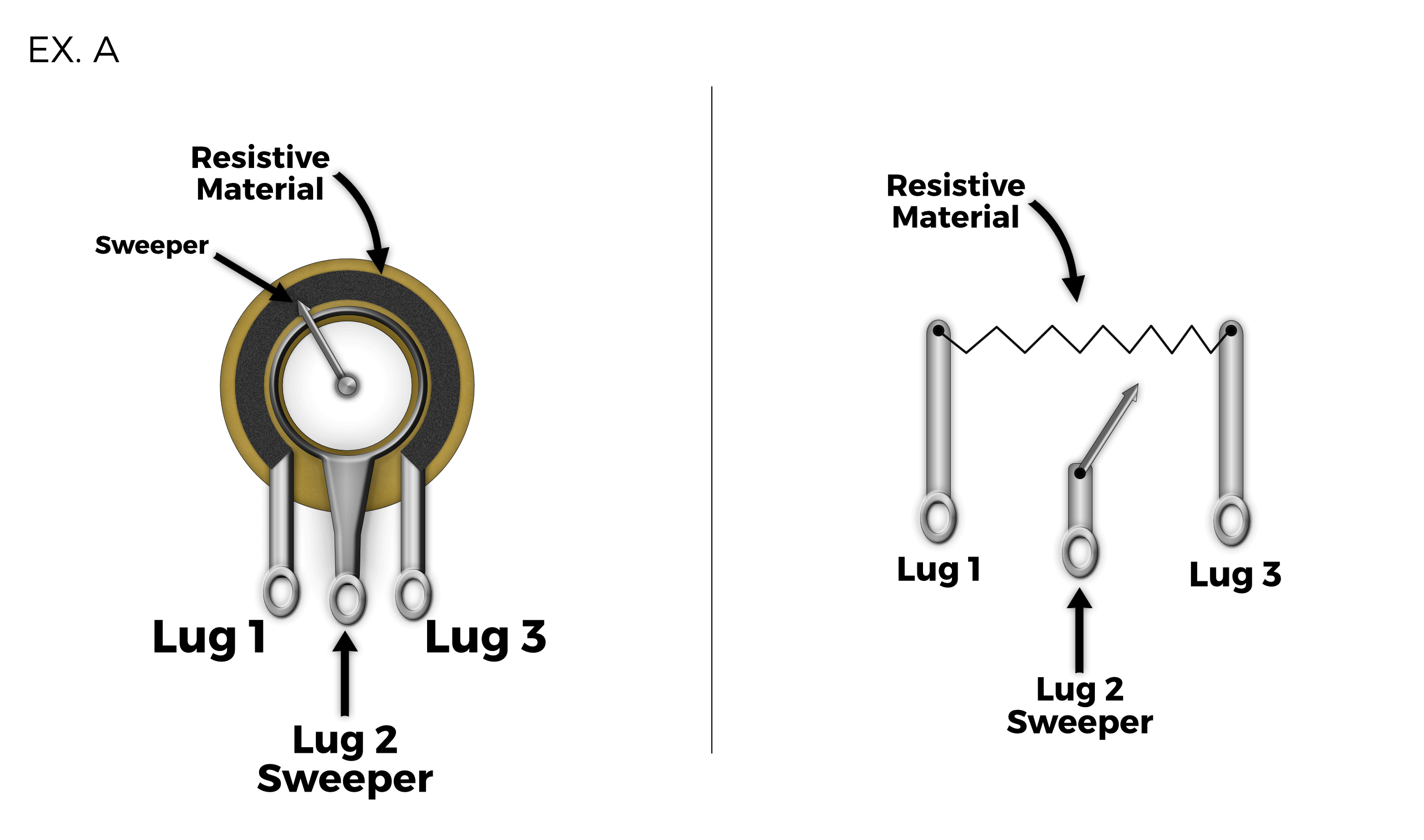
In Example A, you can see that the pot consists of a resistance strip made of resistive material and a sweeper. The sweeper moves across the resistance strip to achieve the desired level of resistance.
For a 250K pot, the resistance measured at the Start of Sweep (Lug 1) and End of Sweep (Lug 3) is approximately 250K, while the middle lug serves as the sweeper. This mechanism allows you to obtain variable resistance! It’s important to note that manufacturers have tolerances; in reality, the resistance might be around 243K.
You can verify the resistance of your pot by taking an ohm reading between the two outer lugs. The pot serves as a foundation for various applications. From volume controls to tone adjustments, let’s explore a few variations to see how we can utilize a single pot in multiple ways.
WHICH POT TO CHOOSE – 250K OR 500K?
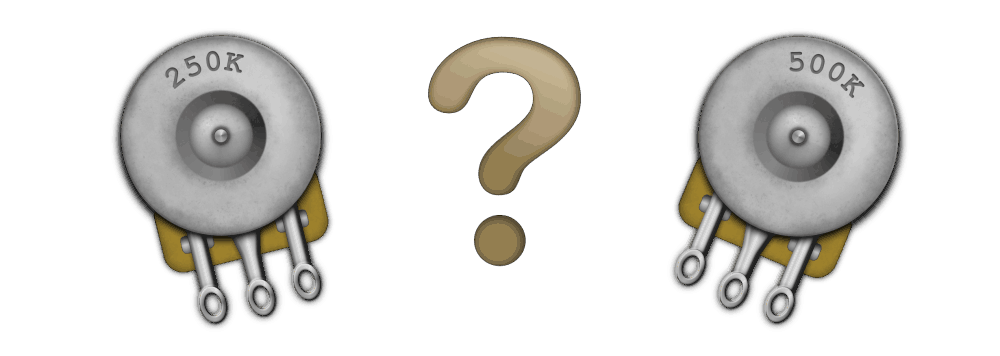
BRASS TACKS:
Single Coil pickups and brighter-sounding pickups (think Strat, Tele) use 250K Pots.
Darker-sounding pickups (P-92, 43-Gauge Big Single, P-90’s, and Hum-Cancelling P-90’s) use 500K Pots. (Read more about choosing between 250K and 500K pots here)
WHY?
The higher resistance pot won’t send your high frequencies to ground as quickly as 250K pots do. They sound brighter and allow more high frequencies to pass through the Pot. 250K Pots will send more high frequencies to ground, making the pot sound a tad darker.
Using the correct pot value is pleasing to the ear – we don’t want muddy sounding humbuckers, or piercing single-coil pickups. So, our pots help compensate and shape the tone right from the get-go.
There are Pots in the middle – we sell 300K Pots as well, which are a little brighter-sounding than 250K pots.
LINEAR VS. AUDIO TAPER POTS
We get asked about Linear and Audio Taper pots a lot. Despite choosing which resistance of Pot to go with, there are two types of Pot “Tapers.” Taper refers to how the sweep acts and sounds. Is it smooth and gradual? Or, quick and abrupt?
LINEAR POTS:
Linear pots are, well, linear. Imagine a straight line on a graph: electronically, your wiper and taper is just like that – a straight line. You would think that this is the end-all, be-all of pots, right? Well, the human ear doesn’t hear that way (there’s a thing called the Weber–Fechner law).
What happens? 90% of your perceived signal change is found in the first 25% of the turn. That means you turn your Pot a little bit, and the bulk of the change happens right there. Not very useful for specific applications.
AUDIO TAPER POTS:
Audio Taper pots are different from Linear pots as they are logarithmic. Imagine that straight line, only curved in the middle. The result is an exponential increase or decrease in resistance as you turn the Pot.
What happens? You experience a smoother change when you turn the Pot. This means that you can perceive a 50% loss in volume at the “5” mark!
We prefer Audio Taper Pots for Volume and Tone, but you can always experiment!
SPLIT SHAFT OR SOLID SHAFT
This is all about the knob! If you have plastic knobs like a Strat, those require Split Shaft pots – you can simply slip the plastic knobs on.
Metal knobs with a set screw require Solid Shaft pots. For Metal knobs, you have to tighten the set screw onto the post.
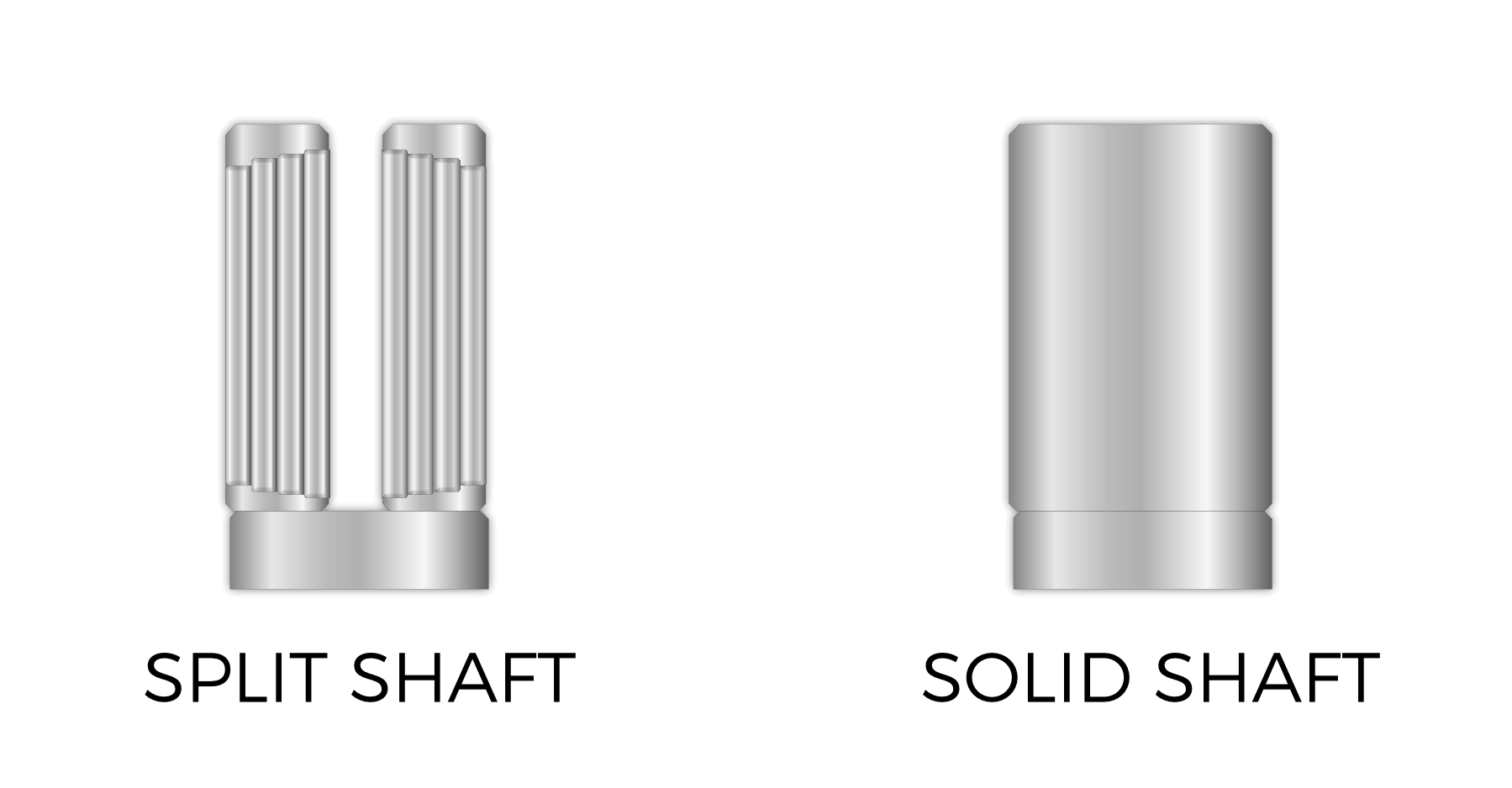
Consequently, this is really hard to do with a Split Shaft, and you might break part of the shaft doing so. A quick fix is to use a “sleeve” which is a metal tube that goes over the Split Shaft, basically converting it to a Solid Shaft pot.
VOLUME POT BASICS
Now that we’ve covered some of the most frequently asked questions, let’s dig into how pots work. Let’s start with Volume Pots:
On a Volume Pot, a basic set-up is this for a Gibson®, Strat® or Tele®:
- Input = Lug 1
- Output = Lug 2
- Ground To Casing = Lug 3
The third lug connects to ground. That means as the sweeper moves towards the grounded lug, more of your signal is sent to ground. When the pot is turned all the way counter-clockwise, all of your signal is being sent to ground, thus, no volume! Let’s illustrate how this works:
Volume Control For Entire Guitar
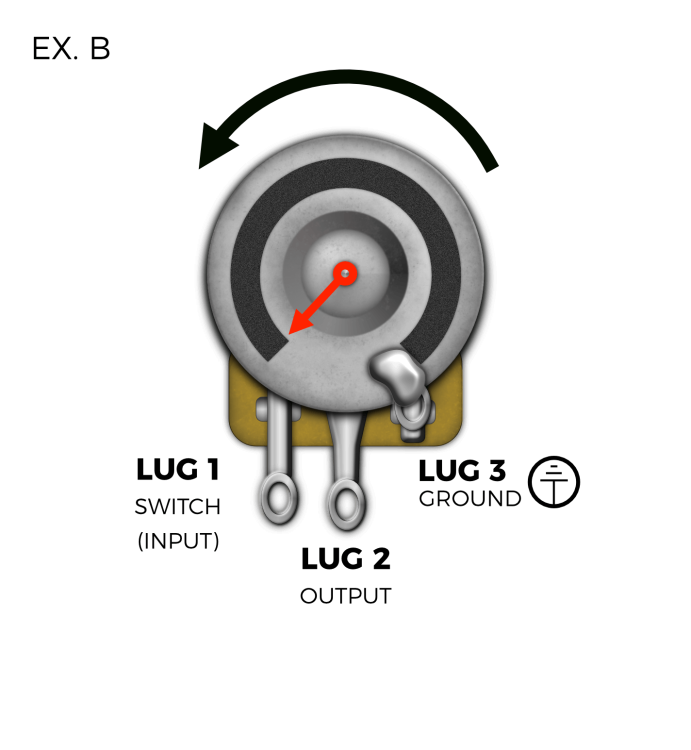
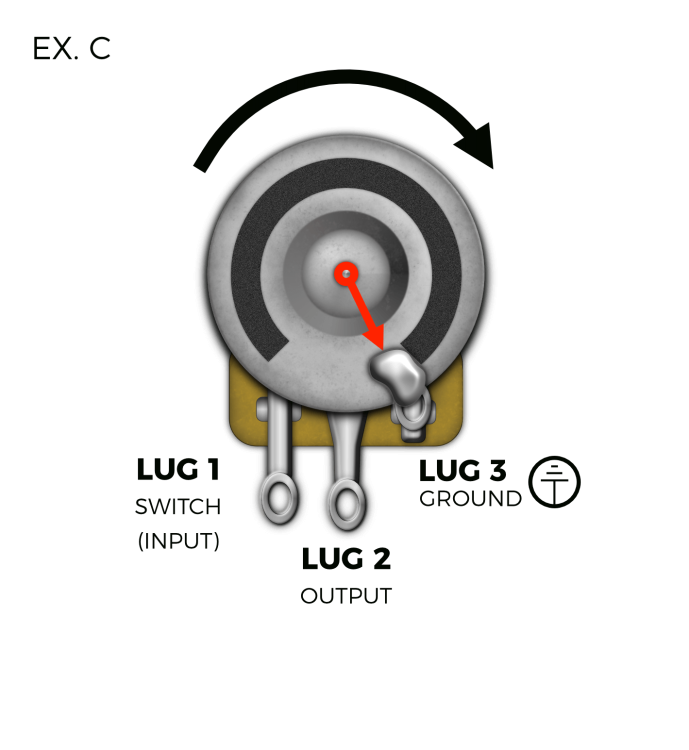
In Example B, your input and output are basically connected – zero resistance. Therefore, all of your signal is passing through the output lug.
In Example C, The sweeper moves towards the grounded lug – which means some of your signal is being sent to ground. When the sweeper is turned all the way counter-clockwise, no signal would come through your amplifier – you’ve connected “output” with ground.
Volume Control For Individual Pickups
You can easily control the individual pickup volume by changing how you wire up a Volume Pot. Les Pauls and Jazz Bass wiring configurations get wired like this:
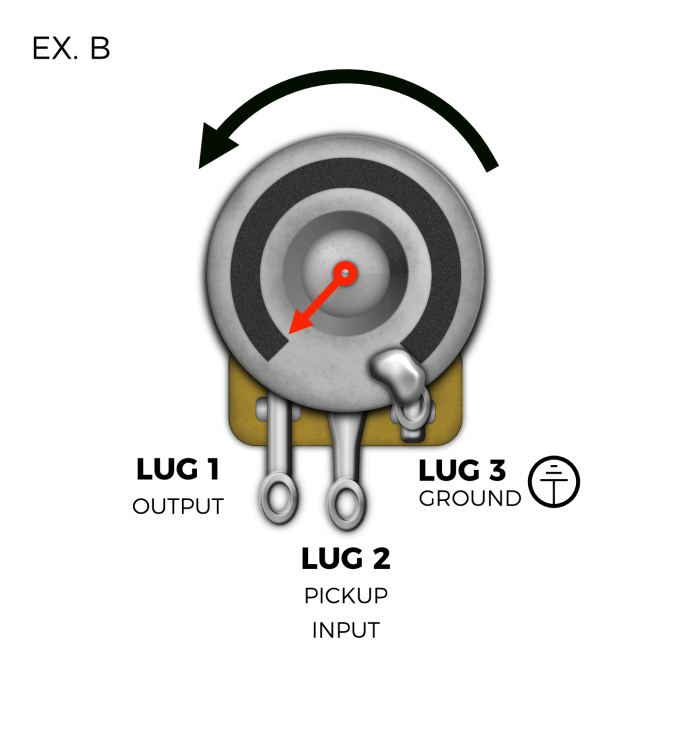
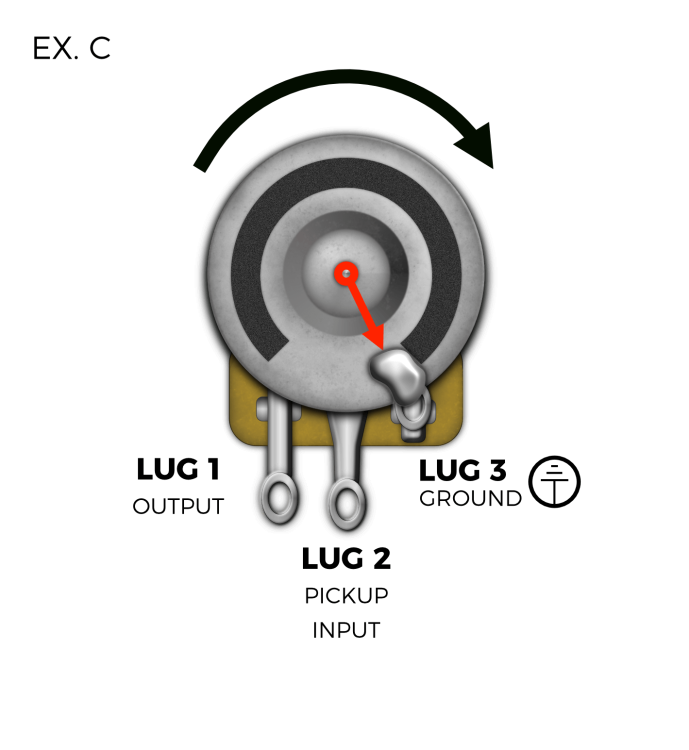
This wiring allows you to control the volume of each individual pickup, rather than the overall volume of the guitar. To set it up, simply change the order of the lugs: make Lug 1 the output instead of the input. The sweeper will be connected to the pickup instead of the output jack. Consequently, instead of connecting the output jack to ground, you will connect the pickup to ground. This setup works particularly well for Jazz Basses or P-J Basses.
TONE POT BASICS
A Tone Pot is essentially a standard potentiometer with a capacitor soldered to it. While it functions similarly to a volume pot, there are key differences.
Instead of sending the entire signal to the ground, the tone capacitor allows only a portion of the signal to be grounded. Tone capacitors are designed to let high frequencies pass through while resisting or rejecting low frequencies.
TONE CAP VALUES:
The value of the tone capacitor (e.g., .0025?F, .02?F, .1?F) determines the cut-off point for high frequencies. A smaller value, such as .0025?F, will allow the least amount of highs to pass through. When you roll off the tone, you’ll notice a subtle change in your high frequencies, but there’s a limit to how dark your guitar can sound.
In contrast, a higher value tone capacitor, like .1?F, will roll off more high frequencies, reaching into the high midrange. This will produce the darkest and deepest roll-off with larger value capacitors.
Combining a Tone Pot and Tone Cap
- You turn your Tone Pot counter-clockwise.
- Your signal starts to pass through the Tone Cap, which connects to ground. (Example D)
- The Tone Cap will reject the low frequencies, allowing the high frequencies to get sent to ground, thus making your tone sound darker.
See below for an illustration:

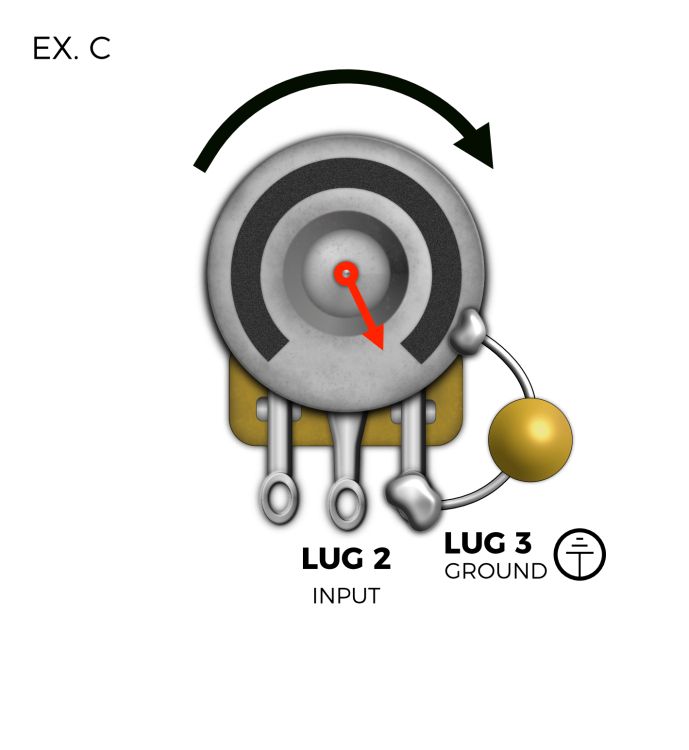
As you can see from the above examples, the tone pot works pretty similarly to the regular Volume Pot. This time, we have our Tone Cap to help us fine-tune our tone!
WHAT IS A NO-LOAD POT?
Before we get into No-Load Pots, let’s talk about “Load”:
The definition of Load in terms of electricity is anything in a given circuit that “consumes” energy as opposed to sourcing (providing) energy.
Even on “10”, your tone pot is still “sucking up” electricity. The Sweeper (Middle Lug) is still technically on the Resistance Strip, which draws power from the Volume Pot.
On a No-Load pot, there is a break on the Resistance Strip where the Sweeper is taken completely out of the circuit. Using a No-Load Pot will make your pickups sound a little more “full-throttle”. They might sound a little bigger, fuller, with added bass and treble. This is all personal taste, and we can take them or leave them, depending on the guitar.
WHAT IS A BLENDER POT?
Lindy has installed a Blender Pot on almost every 3-pickup guitar he owns. A Blender Pot is a type of No-Load Pot that will “Blend” between two pickups that it’s wired to.
It’s a useful mod that allows you to get a lot of tone options – like Telecaster tones out of your Strat. While the Bridge is selected, turning the Blender Pot will blend in the Neck.
To illustrate a simple installation of a blender pot, check out this wiring diagram here.
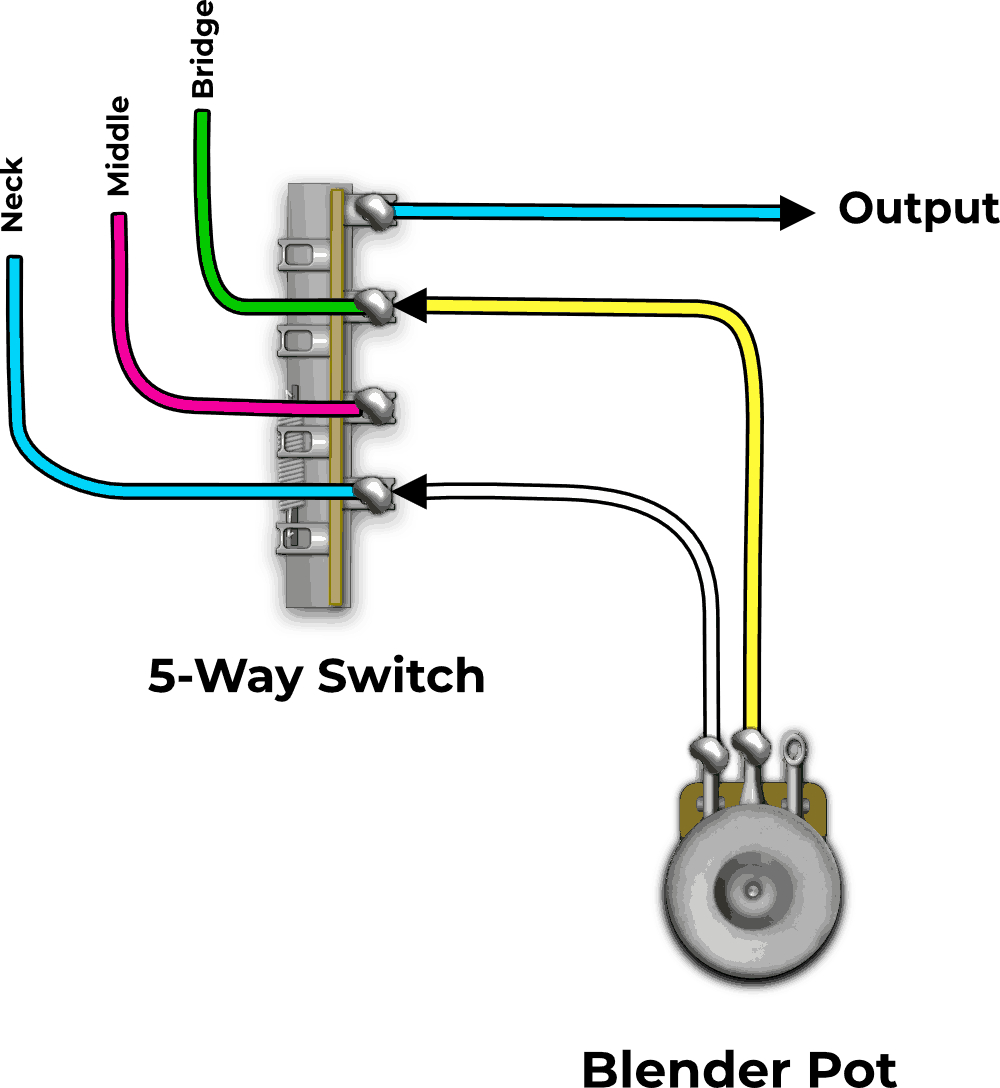
Whew. Now you have a grip on the basics. I hope this article has been helpful. Now use your guru knowledge to create your own unique tonal combinations, and make sure you choose the pots that will work best for you.
Comments
93 Comments For This Post
Leave A Comment
Want to chime in to the conversation? Please do so! Please respect others.

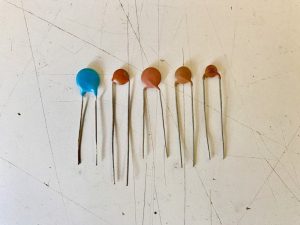

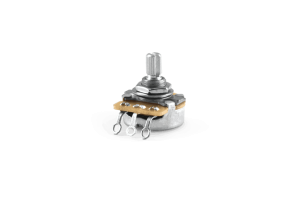
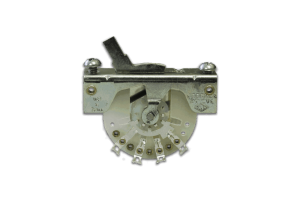
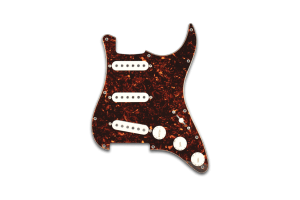
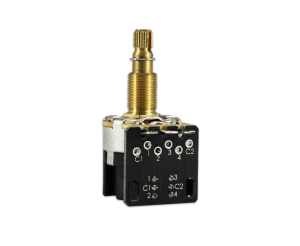

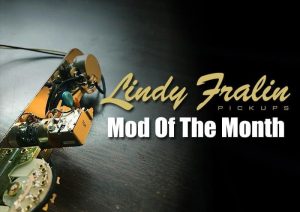

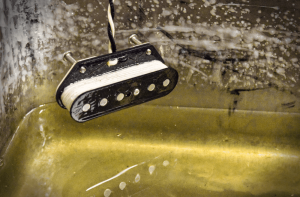
Hi Tyler,
I replaced the volume pot on a mexican Jazzmaster. Went from a 250K to a 500K. After replacing it everything works but none of the adjustments work (tone, volume, etc.). So it plays fine but only at one volume. My guess is that it’s a ground issue since it affects everything but thought I would see what you think.
Thanks, Mike.
Hey Mike,
Check to see if Lug #3 of your new volume pot is connected to ground. If so, take a look at this article to diagnose the problem. I think it’s a ground issue. Grounding Article here
Question about tone pot/capacitor placement on gibson explorer/2 volume, 1 master tone pots. According to the wiring diagram for this setup, it looks like the tone pot is connected after the 3 way pickup selector switch and then to output jack. Does this have a 50’s style effect on the tone control? Thanks for your input, Tyler
Hey Gary,
Thanks for your question! As a matter of fact, yes. You’ll notice it behaving slightly differently when the Volume and Tone controls are played with.
Tyler
Thanks!
Great article. I have a guitar with 2 HBs, 2 volume and 1 tone pot and a 3 way toggle switch. They are wired traditionally (like your examples B and C). If I wanted to switch to jazz bass type wiring so the volumes worked independently in the middle position, is there a downside or “cost’ to doing that?
Hey David,
It’s pretty subjective – you won’t be able to easily cut out the entire guitar, like you can with a Master Volume. When wired traditionally, turning the volume pot down – regardless of the pot – will short out the output jack. This “kills” the entire guitar.
Wiring your pickups into the middle lug and putting your output jack off of your Tone Pot will give you independent control of your pickups, but you’ll need both volume knobs to be all the way off to “kill” the guitar.
Hi, great post! about les pauls, modern and 50s, whats the difference in soldering:
A) Tone
Modern: the capacitor in the 2nd log (3rd ground)
50s: the capacitor in the 3nd log (2rd ground)
Is there a difference in respond of the Tone control?
B) Volume
Modern: the capacitor in the 1nd log
50s: the capacitor in the 2nd log
what I’m trying to say is: Is there a difference in how you solder the cap in the tone pot? / what about the cap in the volume pot? / what you decide in the volume pot (about the cap) tells you what you sould do in the tone?
thanks a lot! cheers from Argentina!
Hey Fernando!
Good question. There are a lot of great aricles out there about 50’s Wiring. In essence, there’s something about having the tone control attached after Lug 1 takes down the load of the Tone Pot even more, giving you a slightly brighter tone.
It makes no difference tonally if you use 1.) the Tone Cap as your jumper to the tone control, or 2.) a Wire to connect to the Tone Pot with a Cap Soldered to the Casing.
Hope that helps!
Hello Tyler,
What a great post!
I’m building my first guitar, a solid body alder with a rosewood fret board. It will be 2 pickups but I’d like to keep it very simple and still get a nice range of sound. Could I use a volume pot for each pickup and then wire one blender tone pot to both volume pots (a 3 knob guitar)?
Thanks.
Hey Dale, Yep, you can do that! You can run the leads of the blender pot to wherever your pickups are connected to on your pot, usually Lug 1.
Hope that helps!
Tyler
I just got a new player series Jaguar (S H) only for the 24” scale to comport
with my short fingers. I love the guitar except for its brightness. I’ve replaced the strings with flat wound 11s and that’s helped. I also play
with the guitar tone and amp at full bass, but I’m still seeking a rounder, warmer, somewhat darker tone. Will replacing the 1000k with 250k
volume and tone pots help?
Absolutely. 1 Meg pots are very bright sounding as they let most of the highs through. 250K pots will soften and darken the tone of your pickups, giving you more warmth.
Tyler
When you talk about 500k pots being brighter, are you talking about the volume pot or the tone pot?
Assuming 2 humbucking pickps, how does the tone differ between these three scenarios?
a) 500k volume pot / 250 k tone pot
b) 500K volume pot / 500 K tone pot
c) 250K volume pot / 500K tone pot
500K and 500K will be the brightest of the three. 250K and a 500K Tone will be the darkest of the three. A 500K with a 250K Tone Pot will still be bright, but slightly tamed in the high frequencies.
Tyler
This is my doubt too …
volume and tone, which influences the value in each of them.
how much the pots of 250k and 500k change both in volume and tone.
for example :
if I use single coils with 500k volume and 500 tone , will it get too bright? yes ? but would I leave the tone potentiometer at 5 would be like they were at 250 right? but with the volume potentiometer at 5 it would lose the volume … but not the brightness?
Hi Tyler
Very informative read, thank you, just spotted a point of slight confusion, Strat pick up numbering is in reverse to what you described, 1 is the Bridge, 5 is the Neck.
Hey! Thanks for that. I’ve adjusted the article to reflect those changes, to clear up any confusion. Cheers.
Thanks for a great article. My question is, if i want to make a no load pot for a ‘spin o split’ mod, should the cut be on the other side of the lugs as opposed to the usual side? It seems that with spin o split, the splitting happens on 10 and full humbucker at 0…
Mark,
Yes, if you cut the resistive material on the left-side (bottom up) ((Lug 1)) of the pot, you’ll make it a no-load pot. There are videos out there showing you how to do it. I’ve burned through a few pots trying to make this work, so be careful!
Great physics lesson!
I’m building a telemaster and want a standard tele pup in the bridge but a p-90 in the neck with standard tele 3 way and 1 vol and 1 tone using lollar pickups . Should I to go with 500k or 250k a p-90 is technically a single coil so it seems like 250k would do the trick.
Hey Paul,
You have a few options here. I would recommend reading our article on how to mix single coil pickups and humbuckers (in this case, a P-90) here.
There’s a few options that will work for you.
Many thanks for great article. Just starting out with guitar electrics so this is GOLD
Hi, Tyler. I’ve got a Hagstrom Swede into which I put two GFS Mean 90s. The pots are 500k, and I can’t tell or remember if I replaced them (I think I did). I replaced the chiclet caps with NOS PIO ones. I’m thinking I attempted ’50s wiring because the neck capacitor (which says it’s 0.015uf) is going from the middle lug of the volume pot to the input lug of the tone pot. The tone pot’s center lug is grounded and the outer lug is just dangling in the breeze.
For the bridge pickup, same style wiring, but the capacitor is 0.022uf.
There’s an additional “tone filter” toggle that had originally been a 3-way pickup toggle with a jumper wire and some caps soldered to each output. I replaced the switch with a big-baton DPDT that I soldered to match the original switch’s intent (or, at least I tried). I think that the jumper I put in made it a SPDT switch, for all intents and purposes. (My recollection is hazy because I did these mods years ago and I’ve not been modding for a long time.) I put in a 0.015uf NOS PIO cap and left a 472k stock cap in there.
All of that is to preface that my pickups have a tendency to be very muddy. Particularly the neck. I get really good single note tones out of the guitar, with either pickup, but cords just don’t sound as good. I notice, as I look inside the cavities, that I’ve got a bunch of really poor solder joints, but they’re not cold enough to cause any scratching or deadness. Does that mean they’re not a problem? Or do cold joints always have some kind of negative effect?
Is the ’50s wiring a bad idea with humbucker-sized P-90s? Are my cap values too low? Are the joints too cold? I know that chasing tone is as old as playing the guitar, but I know this guitar could be a tone monster. It’s got lots of mojo and I just want to make it sound as good plugged in as it does acoustically.
Sorry for the long post, but I don’t really know where else to turn besides the forums to find people with any idea about this stuff and whom (I hope) aren’t bored to death to hear all the particulars. Thanks in advance for any advice you can offer.
Steve,
Sorry for the delay in response – we’ve been busy making pickups. Your areas of focus on this would be your Solder Joints, Pots, and what you said was a 472K “Cap”. That’s a value for a resistor, and if that’s on all the time, your pickups are “seeing” a 250K Volume Pot instead of a 500K. That could be what’s making your guitar darker. If I were you, I would probably start fresh with standard wiring, see how that sounds, then slowly add some mods.
Your cap values (.015 / .022) don’t really make much a difference as your signal isn’t passing through them all the time. I would find where your signal is passing through 100%, and start the process there.
Tyler
Hey Tyler, if I’m using a hum, single, mini hum strat.. what pots do you recommend if I play heavy metal, and want high output from both humbucker but want that nice strat tone from the middle single coil? I was thinking 500 volume 300 single tone and 500 mini hum tone. Thanks
Hey Eric,
Thanks for your question. That seems like a viable option for you, if it were my guitar I would start with a a 500K Volume Pot, 250K Tone and Tone 2. If you needed brighter tone, then you could opt for 500K Volume Pots. They make a slight difference.
I hope that helps!
Tyler
Hey, that was a really well written post! This is the first time that all this pickup/wiring thing is clear to me. Thanks!
I have 2 little questions:
1) is a blender pot EXACTLY a no-load pot?
2) will a blender pot still work if you solder the wires the other way around as the diagram shows? (wich would be connecting bridge to the lug and neck to the sweeper)
Thanks again for all the info!
Hey Pablo,
1.) Yes sir – it’s a no load pot.
2.) Also Yes – you can use this differently as it’s a resistive barrier is decreased between the two signals.
Thanks for your questions.
Tyler
I’m getting confused here. What’s the best combination for a HSS configuration? 250k volume, 250 k on the tone for the single coils and 500k on the tone for the humbucker? I have seen that dual pots are available. How could a 250k/500k dual pot be wired for the volume control?
Pat,
Really good question here. You have to sacrifice something. Either you opt for 250K pots and have a dark sounding humbucker, or 500K pots and have really bright single coils. You can do something like a 300K pot and meet in the middle, but concentric pots are your friend here. Each pot has its own set of lugs, and you just have to run twice the amount of jumpers to accommodate.
Does this apply to volume and tone pots or just tone pots? I have telecaster I want to put a neck humbucker in.
What a great article. Tyler, you cleared up somethings I have been unsure about for a long time. Good job and I look forward to more!
Thank you, Michael!
Thank you.
Good post, but linear volume pots are being recognized more for what they can do for guitarists (and bassists). Lot of guitars, like Gibson, come with stock linear pots, and I prefer them for volume pots. What’s great about them is you can really dial near full volume. Pickups lose just a bit of sparkle but can be fully heard when you turn them just a little bit, and you can find that easy with a linear pot. Also, when near zero, swells are really easy because you only need a tiny turn to bring them into relatively full volume, and you don’t have to actually turn it halfway to get half sound. Lastly, if you accidentally hit the volume pot while playing, with a linear pot, you don’t lose much volume. That said, I found that only 250k or 300k linear pots really work the way I want them to. When they’re 500k, I wish the taper was modified to make 250k to 500k happen really quickly but to have the rest be linear. Meanwhile, audio is always better for tone pots in my experience.
Thanks for your input, Paul!
Wouldn’t they (linear) be worse off for accidental touches during playing because they require much less movement for a more dramatic change? Thanks for mentioning your view though, the volume swell pro is a good tip!